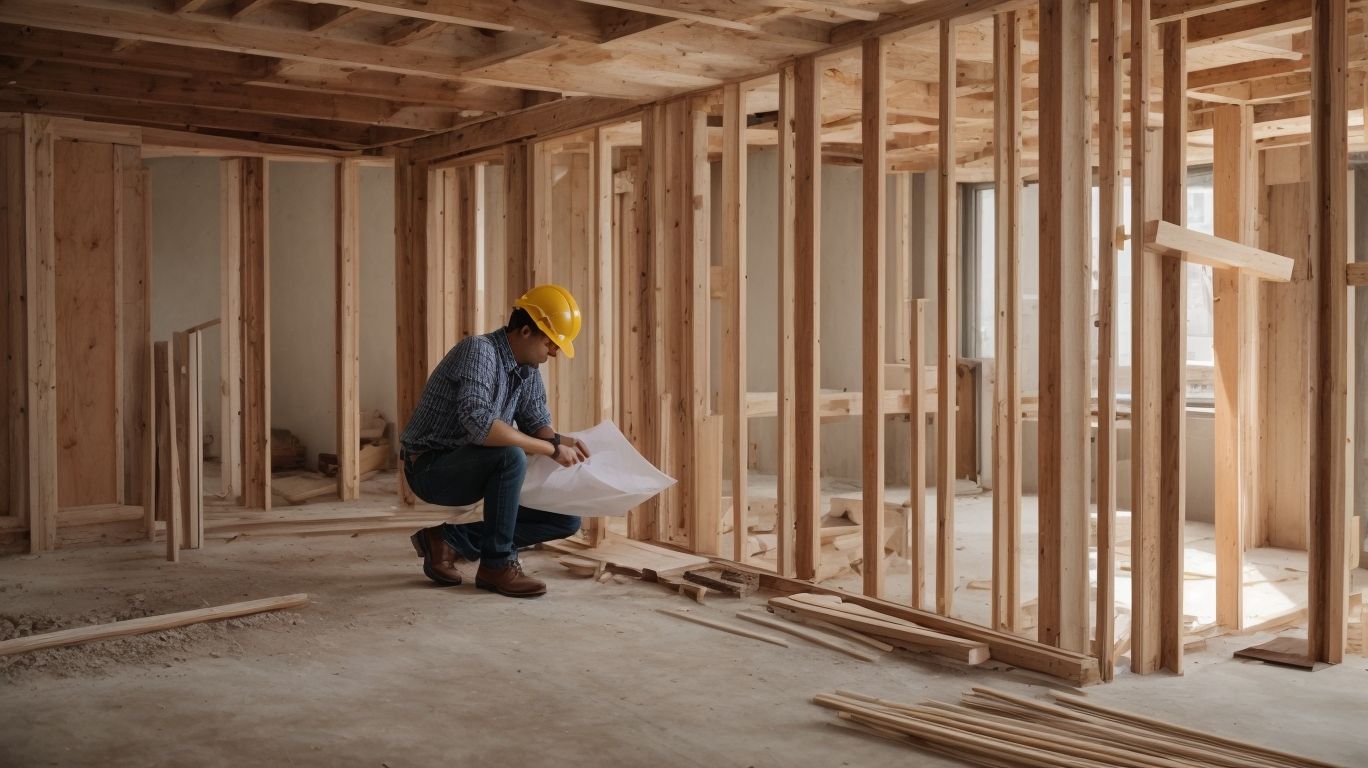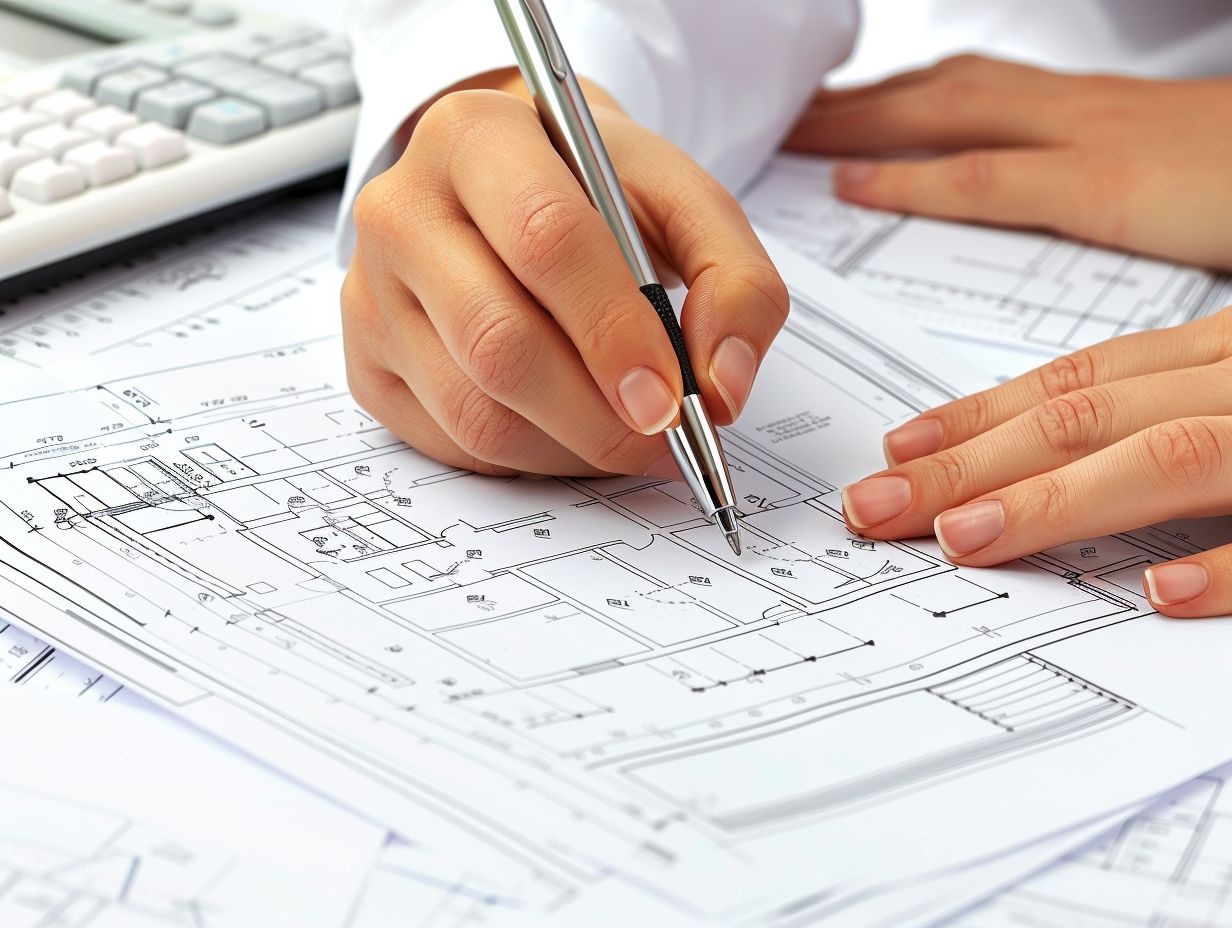
SF’s Guide to Load-Bearing Wall Removal: Insights from a Structural Engineer
SF’s Guide to Load-Bearing Wall Removal: Insights from a Structural Engineer
Are you considering a home renovation that involves removing a load-bearing wall? This comprehensive guide will provide you with valuable insights from a structural engineer, outlining the key considerations, safety precautions, potential risks, and alternatives associated with this significant undertaking.
In this article, we will delve into the fundamental questions surrounding load-bearing wall removal, including:
- The reasons behind such a decision
- The crucial role of a structural engineer
- The step-by-step process
- Safety considerations
- The potential risks and challenges
By the end, you will have a clear understanding of the complexities involved in this process, empowering you to make informed decisions for your renovation project.
Whether you are a homeowner planning a remodel or a professional in the construction industry, this guide aims to equip you with the knowledge needed to navigate the intricacies of load-bearing wall removal. So, let’s explore the essential aspects of this undertaking and gain valuable insights from the perspective of a structural engineer.
What Is a Load-Bearing Wall?
A load-bearing wall is a critical element in a building’s structural system, responsible for supporting the weight of the structure and maintaining its integrity.
It plays a crucial role in distributing the building’s weight load to the foundation and other structural components. Load-bearing walls are designed to comply with building codes to ensure a safe and stable structure. They are strategically positioned to provide stability and prevent structural failure, making them essential in various construction projects.
Whether in residential, commercial, or industrial construction, load-bearing walls are indispensable for ensuring building safety and structural stability.
Why Would Someone Want to Remove a Load-Bearing Wall?
The decision to remove a load-bearing wall often arises during renovation projects, aiming to achieve better load distribution, implement engineering solutions, and enhance the overall design of the building.
This is driven by the desire to create more open and spacious interiors, allowing for better flow and connectivity between rooms. Load-bearing wall removal can facilitate the integration of modern engineering solutions, such as installing steel beams or support columns, to ensure structural stability and enhance the building’s overall strength.
By carefully considering load distribution improvements, renovations can transform outdated structures into modern, functional spaces that meet the evolving needs and preferences of occupants.
When Is a Structural Engineer Needed for Load-Bearing Wall Removal?
Engaging a structural engineer for load-bearing wall removal becomes essential to ensure comprehensive structural analysis, construction safety, and effective project management.
Their expertise is instrumental in assessing the impact of wall removal on the overall structural integrity of the building. Through meticulous analysis, they determine the most suitable support systems and materials to maintain stability. Their involvement ensures adherence to local building codes and safety regulations, mitigating potential risks during and after the construction process.
Their role extends to overseeing the construction phase, providing crucial guidance and expertise to uphold safety standards and project timelines.
What Are the Steps for Removing a Load-Bearing Wall?
The process of removing a load-bearing wall involves several critical steps, including:
- The installation of support beams, which is crucial to ensure proper load distribution and secure attachment to the existing structure.
- Securing the necessary building permits, which involves obtaining approval from the local building authority to ensure compliance with safety regulations and structural integrity.
- Utilization of advanced construction techniques, such as temporary shoring and precise cutting methods, which are essential for a successful wall removal.
- Implementing structural enhancement measures, such as adding reinforcement to adjacent walls or floors, to help maintain the stability of the overall structure.
During the installation of support beams, it’s crucial to ensure proper load distribution and secure attachment to the existing structure. The permit process involves obtaining approval from the local building authority to ensure compliance with safety regulations and structural integrity.
Advanced construction techniques, such as temporary shoring and precise cutting methods, are essential for a successful wall removal. The application of structural enhancement methodologies, such as adding reinforcement to adjacent walls or floors, helps maintain the stability of the overall structure.
Consult with a Structural Engineer
The initial step in load-bearing wall removal is to consult with a structural engineer who can offer engineering solutions, contribute to building design considerations, and provide construction oversight.
They play a crucial role in evaluating the structural integrity of the building to ensure that load-bearing walls can be safely removed without compromising the building’s stability. Their expertise contributes to finding alternative support structures and designing modifications that maintain the structural integrity.
Their oversight during the construction phase ensures that the modifications are executed accurately and in compliance with engineering standards, ultimately ensuring the safety and longevity of the building.
Obtain Necessary Permits
Securing the required building permits is a crucial aspect of load-bearing wall removal, demanding adherence to construction regulations, compliance with the permit process, and meeting specific construction requirements.
It is imperative to obtain building permits to ensure that the load-bearing wall removal adheres to safety and structural standards. By navigating the permit process, construction professionals can guarantee compliance with regulations and fulfill all necessary requirements.
This involves thorough knowledge of local building codes and regulations, as well as coordination with building officials to ensure the smooth execution of the project. Failure to obtain proper permits or meet construction requirements can result in serious legal and safety implications, making it essential to prioritize these aspects before commencing any demolition or construction work.
Prepare the Area for Removal
Before removing a load-bearing wall, thorough preparation of the area is essential, involving the demolition process, adherence to construction practices, consideration of structural modifications, and meticulous construction planning.
This preparatory phase ensures the safety and stability of the structure during and after the removal of the wall. Demolition involves careful dismantling to minimize potential structural damage while following construction practices such as temporary shoring and bracing to support the load. Structural modifications must be carefully evaluated to determine the impact on the overall building integrity. Comprehensive construction planning is crucial to ensure a smooth and well-coordinated process, minimizing disruptions and ensuring the project’s success.
Install Temporary Support
The installation of temporary support plays a pivotal role in load-bearing wall removal, ensuring the redirection of the load path, utilization of advanced construction techniques, and maintaining structural stability.
This process involves carefully assessing the load distribution and implementing temporary structures such as horizontal beams and adjustable jacks to uphold the weight. By carefully planning the positioning of these supports, the load is effectively redistributed to ensure the integrity of the remaining structure during the wall removal.
Expertise in understanding the load transfer mechanisms and calculating the appropriate support requirements is crucial in this phase, safeguarding the overall stability of the building throughout the construction process.
Remove the Wall
The actual removal of the load-bearing wall requires meticulous construction oversight, thorough building inspection, and consideration of load-bearing capacity to ensure structural integrity.
This process typically begins with a comprehensive assessment of the building’s structural design and load-bearing components. A qualified structural engineer evaluates the potential impact of removing the wall and devises a plan to redistribute the load, maintaining the overall stability of the structure. Local building codes and regulations must be adhered to throughout the process to guarantee that the necessary safety standards are met. Regular inspections and quality assurance measures are vital to verify that the structural integrity is maintained during and after the removal process.
Reinforce the Remaining Structure
Following the wall removal, reinforcing the remaining structure through retrofitting measures becomes imperative, contributing to building renovation efforts and enhancing structural support.
This post-removal phase often involves evaluating the existing structural elements to identify areas that need reinforcement. Retrofitting techniques such as adding steel braces, installing carbon fiber reinforcements, or using structural epoxy can effectively strengthen the remaining components. These measures not only ensure the safety and stability of the building but also provide opportunities to modernize and optimize the structure for future needs. By incorporating these retrofitting strategies, the renovated building gains improved resilience and longevity.
Finish the Area
The final step involves finishing the area post-wall removal, encompassing ongoing construction projects, building systems integration, structural evaluation, and dedicated construction supervision.
This phase focuses on seamlessly integrating the building systems affected by the wall removal, such as electrical, plumbing, and HVAC, to ensure that they function optimally. Structural evaluation becomes crucial to ensure the stability and safety of the remaining structure. Dedicated construction supervision is imperative to oversee the entire process and make necessary adjustments to maintain project timelines and quality standards.
It is important to emphasize that these steps are essential to the successful completion of any major structural alterations within a building.
What Are the Safety Considerations for Load-Bearing Wall Removal?
Safety considerations during load-bearing wall removal involve the proper installation and utilization of support beams, meticulous attention to construction safety protocols, and the careful management of load paths to ensure structural stability.
This process requires an in-depth understanding of load distribution and how to redirect it effectively. Precise calculations and measurements are imperative to determine the size and placement of the support beams. The construction team must strictly adhere to safety standards at every stage, from the initial planning to the actual removal and replacement of the load-bearing wall.
Ensuring proper management of load paths and reinforcement of the surrounding structure is essential to uphold the integrity of the building during and after the wall removal process. Comprehensive safety measures are crucial to protect both the workers and the structural stability of the building.
Properly Supporting the Structure
Properly supporting the structure during load-bearing wall removal is paramount, as it directly impacts load distribution, building safety, and the overall structural evaluation process.
It is crucial to ensure that the load from the removed wall is redistributed efficiently across the remaining structure to maintain the building’s stability. The safety considerations extend to the potential risks associated with the structural changes, highlighting the need for careful planning and implementation.
Proper structural evaluation, including assessments of load-bearing capacities and potential reinforcements, is essential to guarantee the long-term integrity of the building. Ultimately, these measures are indispensable in preserving the safety and stability of the structure amidst significant modifications.
Using Appropriate Tools and Techniques
The utilization of appropriate tools and techniques is crucial for load-bearing wall removal, ensuring compliance with building regulations, effective structural modifications, and dedicated construction oversight.
Using specialized tools such as laser levels, structural analysis software, and proper safety equipment is imperative to accurately assess the structural integrity and potential impact of wall removal. Techniques like installing temporary shoring and implementing precise cutting methods are essential for maintaining the building’s stability during the alteration process. This demonstrates the significance of understanding and adhering to building codes, ensuring that the structural changes are executed in a safe, compliant manner with thorough supervision throughout the construction process.
Following Building Codes and Regulations
Adhering to building codes and regulations is a fundamental safety consideration during load-bearing wall removal, necessitating the acquisition of permits, meticulous code compliance, and adherence to established building standards.
These regulations are in place to ensure the structural integrity and safety of buildings. Obtaining the necessary permits involves a thorough review of the proposed changes by the local building authorities, which helps to guarantee that the alterations align with safety and structural standards. Meticulous code compliance is essential in every aspect of the construction process, from the materials used to the design configurations, ensuring that the final structure is sound. Adhering to established building standards further reinforces the stability and durability of the building, ultimately safeguarding the occupants and the surrounding environment.
What Are the Potential Risks and Challenges of Load-Bearing Wall Removal?
The process of load-bearing wall removal presents potential risks and challenges, including the risk of structural instability, the potential for costly repairs, and the implications for building renovation projects.
This intricate process requires careful consideration of the building’s structural integrity to prevent potential instability. Costly repairs may arise if the removal is not executed with precision and expertise. Such challenges can significantly impact the overall timeline and budget of renovation endeavors, making it imperative to engage experienced professionals and conduct thorough assessments before proceeding with load-bearing wall removal.
Structural Instability
The risk of structural instability is a primary concern during load-bearing wall removal, necessitating the use of sound construction methods, ensuring building safety, and prioritizing structural support.
This potential challenge underscores the critical importance of adhering to established building codes and regulations. Builders and structural engineers must exercise caution and precision when modifying or renovating load-bearing structures to prevent compromising the overall stability of the building.
Implementing thorough inspections and utilizing high-quality materials are essential steps in mitigating the risks associated with structural alterations. Ongoing maintenance and periodic assessments are indispensable for ensuring the long-term structural integrity and safety of the building.”
Costly Repairs
The possibility of costly repairs is a significant challenge associated with load-bearing wall removal, requiring vigilant construction oversight, meticulous building inspection, and unwavering construction compliance.
This challenge underscores the importance of thorough monitoring by construction professionals to identify any potential issues during the load-bearing wall removal process. Comprehensive building inspections are crucial in ensuring that structural integrity is maintained, minimizing the risk of expensive repairs.
Adherence to construction compliance standards is essential for risk mitigation, as it guarantees that the work is carried out in accordance with safety regulations and industry best practices, reducing the likelihood of costly structural issues.
Complications with Existing Utilities
Complications arising from existing utilities pose a notable challenge during load-bearing wall removal, necessitating the application of residential renovation expertise, comprehensive building inspection, and dedicated construction oversight.
This is especially crucial to ensure the safety and structural integrity of the building. Without proper expertise and oversight, the process of removing load-bearing walls can lead to unforeseen issues such as electrical wiring or plumbing disruptions, which can have a significant impact on the overall renovation project.
Therefore, it is imperative to engage professionals who can assess the existing utilities, identify potential risks, and plan the renovation process meticulously to avoid any complications or setbacks.
What Are the Alternatives to Removing a Load-Bearing Wall?
In lieu of removing a load-bearing wall, alternatives such as advanced construction techniques, retrofitting measures, and structural enhancement solutions offer viable options to address structural modifications and renovations.
These alternatives enable homeowners and contractors to reinforce existing structures without compromising their integrity. Advanced construction techniques, like installing steel beams or engineered lumber, can redistribute the weight of a load-bearing wall, allowing for open floor plans and improved aesthetics. Retrofitting measures, such as adding support columns or installing cross-beam reinforcements, provide additional stability. Structural enhancement solutions, like carbon fiber reinforcement or post-tensioning, can significantly bolster the structural integrity of a building. These options exemplify the innovative approaches available for addressing load-bearing wall modifications.




No Comments